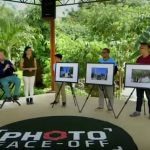Tawi-Tawi
Into the Sulu Archipelago
One week prior to my departure to Tawi-Tawi I received an email from the US Embassy in Manila. “U.S. citizens should continue to defer non-essential travel to the Sulu Archipelago, due to the high threat of kidnapping of international travelers and violence linked to insurgency and terrorism there.” This region of the Philippines never gets good press and honestly has a very negative reputation among most people here in the country. From my own experience, if you mention to a Filipino that you are going to Mindanao many will look at you with genuine concern. Mention Sulu and most won’t really even comprehend it, like the place doesn’t exist in real.
For the longest time I have wanted to visit this region of the country and the opportunity finally came. I traveled with a talented group of people from the Extra Mile Productions who generously documented my work with Project Katutubong Pilipino.
I had some legitimate concerns, especially being a foreigner. A few weeks before we left there was actually a kidnapping of a finance officer from a mining company in the capital of Bongao. I was assured we would be well taken care of and I knew, aside from my own negative perceptions by what limited knowledge I knew of the area, everything would be fine. I wanted to approach this with an open mind and capture as much as I could to bring back positive stories of Tawi-Tawi. When something bad happens, such as in the case of kidnappings, there are always more details to the story than what the media tells us. Usually, and in most cases, these horrendous acts could have been prevented if certain precautions and protocol were taken by the abducted.
For the longest time I have wanted to visit this region of the country and the opportunity finally came. I traveled with a talented group of people from the Extra Mile Productions.

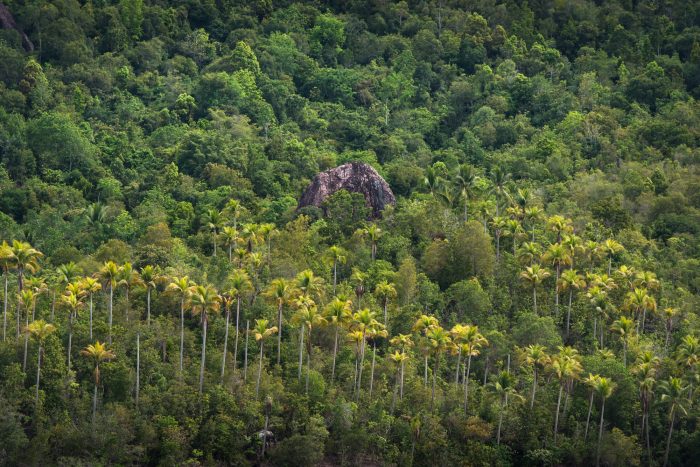
Tawi-Tawi is the southern most province in the Philippines with roughly 300 surrounding beautiful islands in the Autonomous Region in Muslim Mindanao. Although I was only able to visit a few of these islands, from what I saw, this is an almost untouched paradise. There is certainly a huge tourism potential for the area, but I still think it will be many years before anything like that could potentially happen. Visitors cannot just show up without arranging their visit with the local government or tourism office. This is mostly because of issues around safety and limited transportation means to travel outside of Bongao. I really would like to thank our hosts from the Tourism Office of Tawi-Tawi and Congresswoman Ruby Sahali for the wonderful hospitality while we were there. I think I put on about 5 pounds during my short visit from all the food we ate. Filipinos are very hospitable and generous in general, but our visit here went above and beyond that. The assortment of fresh seafood everyday and local delicacies offered every few hours was enough to put a small bulge in anyones belly.
Aside from the natural beauty of the region, it was the people of Tawi-Tawi that I was most interested in learning more about. Mainly the Tausug and Sama-Bajau. These are the two dominant ethnolinguistic groups of the region and they have learned to coexist with each other throughout history. The Tausug originally had an independent state known as the Sulu Sultanate which was a very large area, including parts of Palawan, Malaysia and Indonesia. The Tausug adapted Islam when the first Muslim missionary arrived in Sulu in 1380. The Sama-Bajau are also originally from Sulu and have adapted a sea oriented lifestyle. Sama-Bajau is really a collective term, used to describe several closely related indigenous peoples who consider themselves a single distinct ethnic group. Historically in the Philippines, the term “Sama” was used to describe the more land-oriented groups, while “Bajau” was used to describe the more sea-oriented, boat-dwelling, nomadic groups. Today, most of the Bajau have long abandoned boat living, and now opt to build piling houses in the coastal shallows.

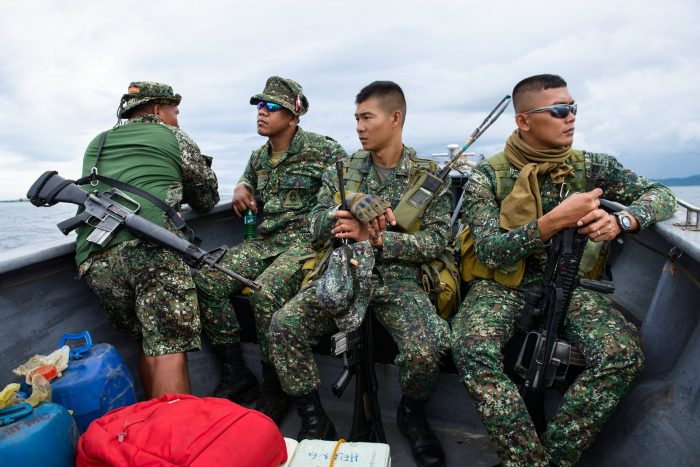
The men keeping peace and order in Tawi-Tawi and our personal escorts during our visit. Here we are on a speedboat heading for Tandubas a long but beautiful ride through virtually untouched islands.
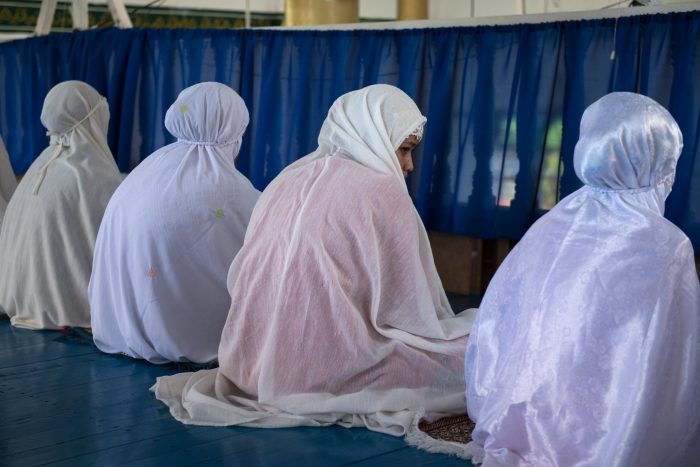
Women during Friday prayer at a mosque in Bongao, the capitol of Tawi-Tawi. The majority of Tawi-Tawi’s population is Muslim and belong to the Tausug or Sama-Bajau people.
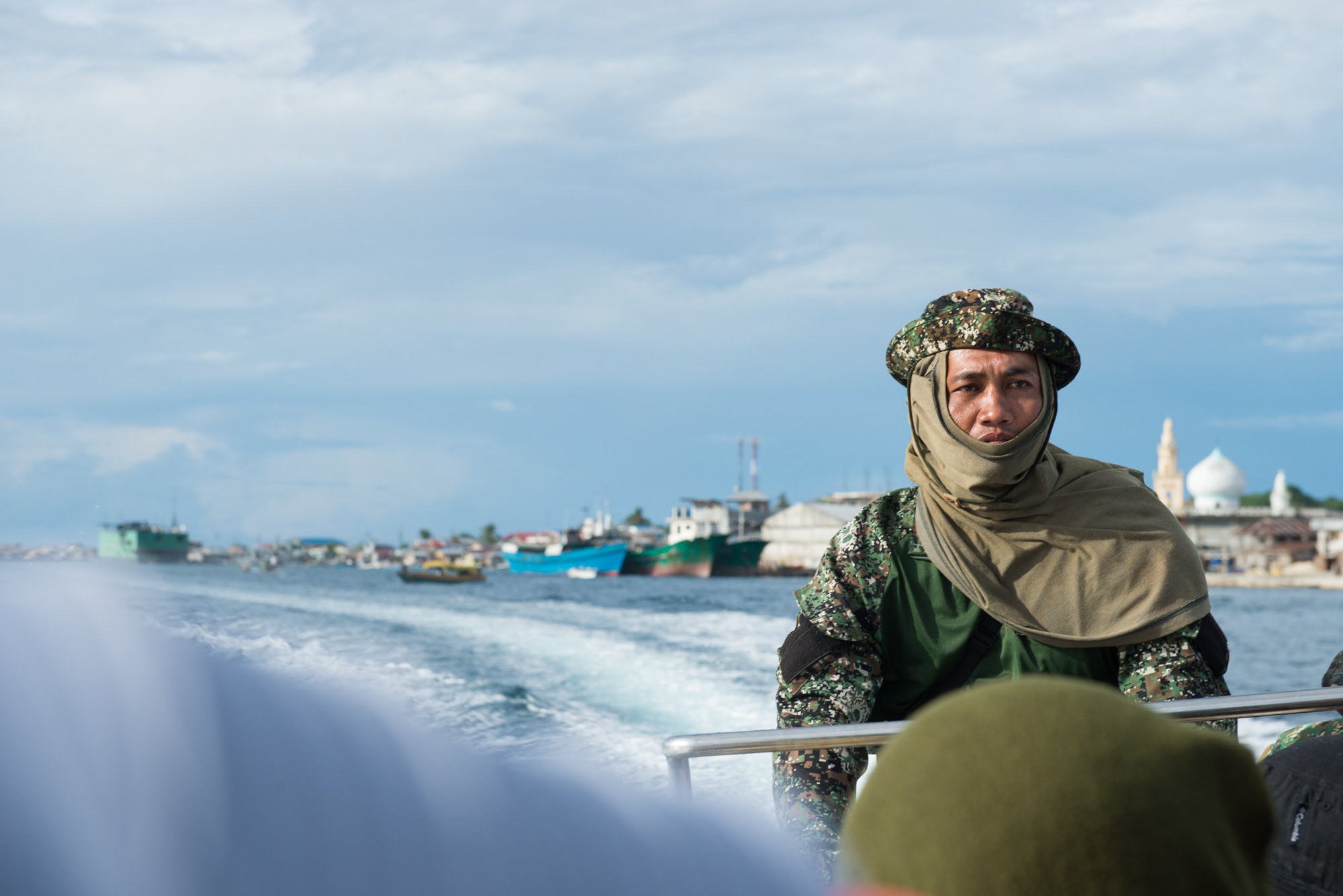
This was a different type of trip for me from my usual low profile, figure-it-out-as-I-go approach. We were a large group, six people from the Extra Mile Productions, together with our security personal and local contacts. We traveled in a big caravan and had somewhat of a set schedule shooting the production. We had an excellent team and the whole week was really a lot of fun and hard work at the same time. I am truly grateful for the opportunity and wonderful company during our stay.
The Tausug and Sama-Bajau are the two dominant ethnolinguistic groups of the region and they have learned to coexist with each other throughout history.
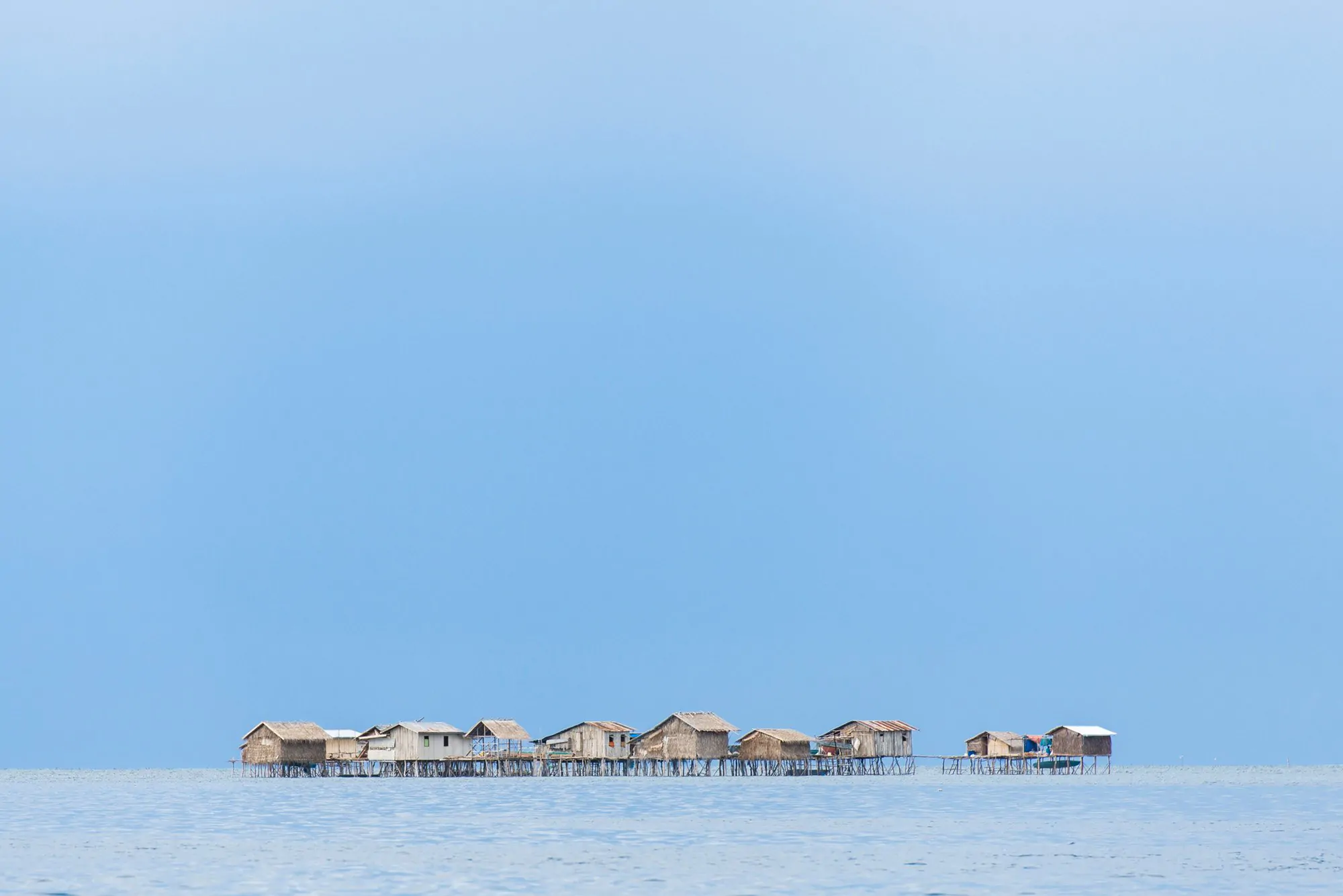
(above) A typical Sama-Bajau community with stilt houses over the coastal shallows of Tawi-Tawi.
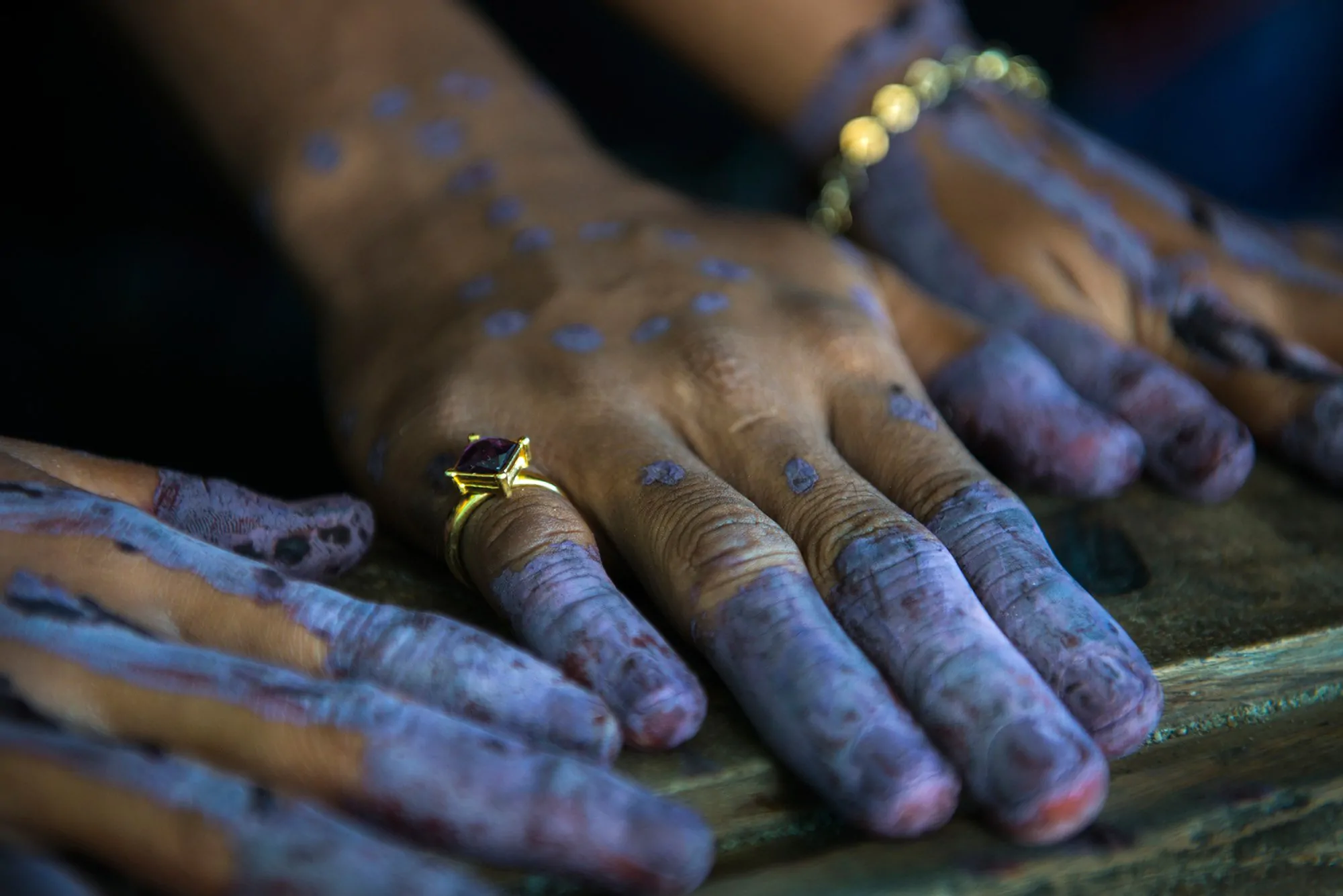
(above) Hands of a Sama-Bajau bride and groom with henna tattoos. The tattoos are placed on their hands to signify their bond together on their wedding day. The design itself is created by the couple but the tattoos should be placed on both of their hands.
(right) A short video about me meeting a young bride while visiting a small Sama-Bajau community. Produced for Project Katutubong Pilipino by the Extra Mile Productions.
The bride was very young, perhaps not even fifteen, and looked very innocent. It is customary for the Sama-Bajau to marry off young women when they come of age.
One afternoon we stumbled upon a small Sama-Bajau community not so far out from the center of Bongao. There was a lot of activity happening and people were beginning to setup a stage area in the center of their community. This wasn’t part of our original itinerary, but we had time to look around and see what was going on. After talking to some women we found out that they were preparing for a wedding that would take place there later in the evening. A Bajau wedding! Something I had always wanted to witness. I asked if the bride and groom were around and sure enough they were just in the house nearby. I made my way over and after seeing the bride I instantly noticed the henna tattoos on her hands. She was very young, perhaps not even fifteen, and looked very innocent. We talked for a while about the meaning of her tattoos and about her wedding later that evening. I found out it is customary for the Sama-Bajau to marry off young women when they come of age. Eventually her husband to be came out and they both agreed that I could take their photos. It was a lovely, spontaneous interaction. We were not able to make it back to the wedding later that evening, but I heard everything went well.
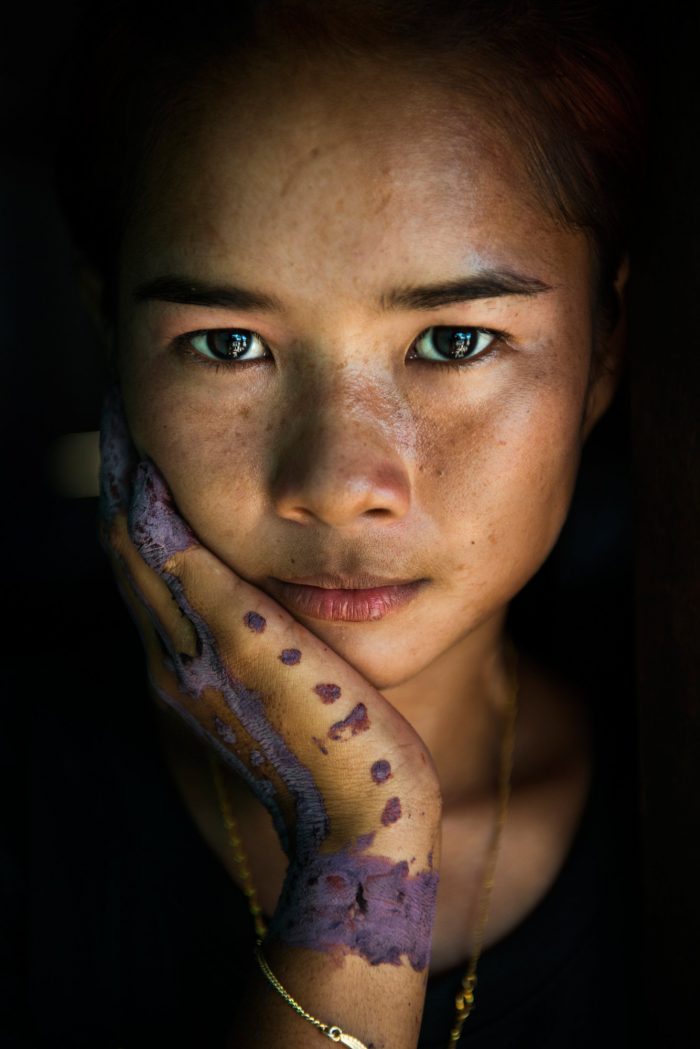
(above) A Sama-Bajau bride on her wedding day.
Tawi-Tawi is considered the largest seaweed producing province in the Philippines with roughly 80 percent of Tawi-Tawians earning a living from seaweed farming. Seaweed is sold to extract its carrageenan, a gelling and stabilizing substance used widely in dairy and meat products. Much of it is exported out of the country. In just about every coastal town we visited there was seaweed either being dried in the sun or harvested nearby in the shallow water.
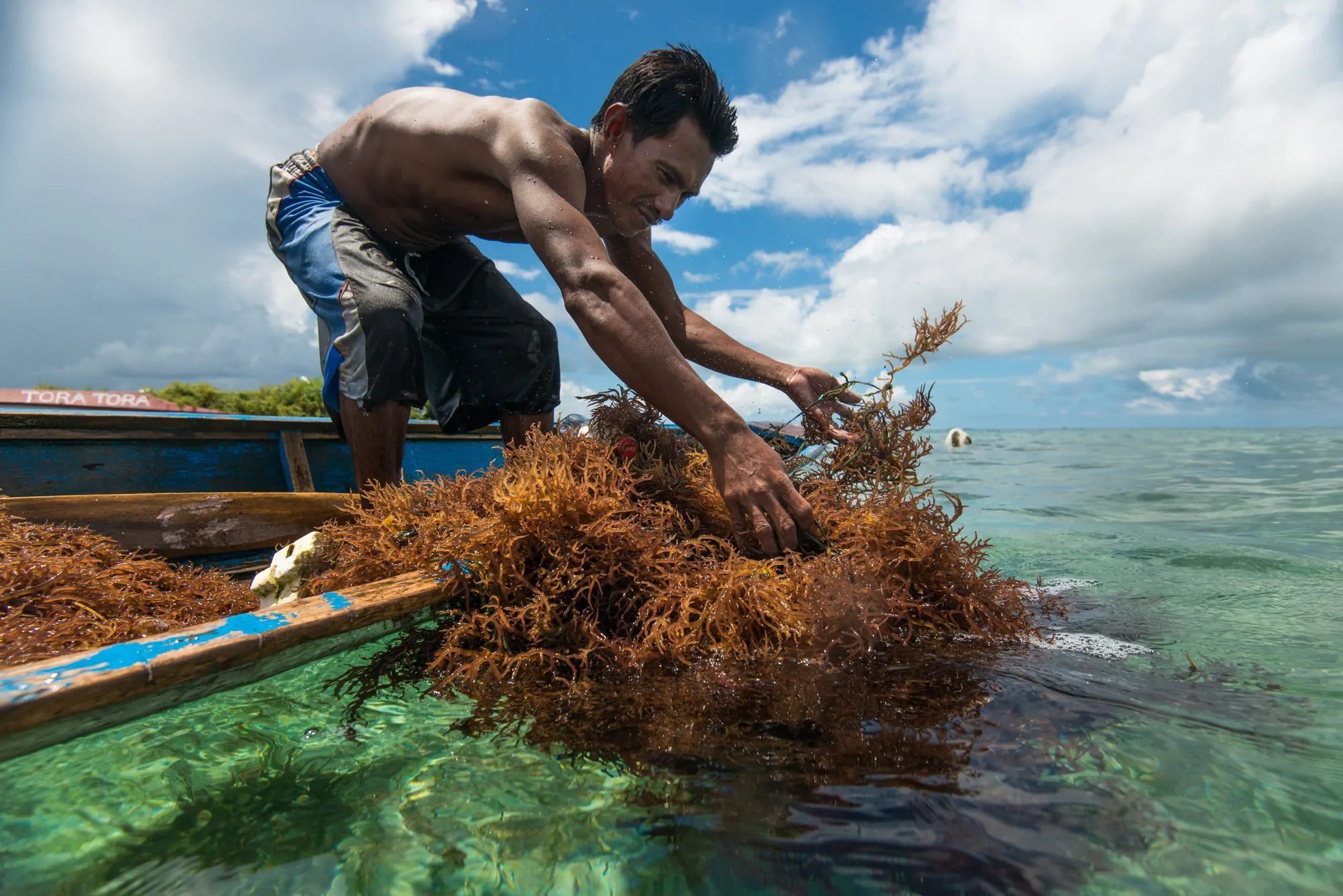
Roughly 80 percent of Tawi-Tawians earn a living from seaweed farming. Seaweed is sold to extract its carrageenan, a gelling and stabilizing substance used widely in dairy and meat products.
A Sama-Bajau man dives to check on his cultivated seaweed. Seedlings are tied to monofilament lines that float roughly one meter below the surface. There are a few varieties of seaweed which are cultivated ranging in color from brown to green.

A couple sorts through their harvest and prepare it to be sold. Growing seaweed is one of the primary livelihoods for communities in Tawi-Tawi. The importance of seaweed in this region can even be seen during Tawi-Tawi’s annual festival, the Agal-Agal (seaweed) Festival. This festival celebrates seaweed alongside the history and culture of Tawi-Tawi’s people.

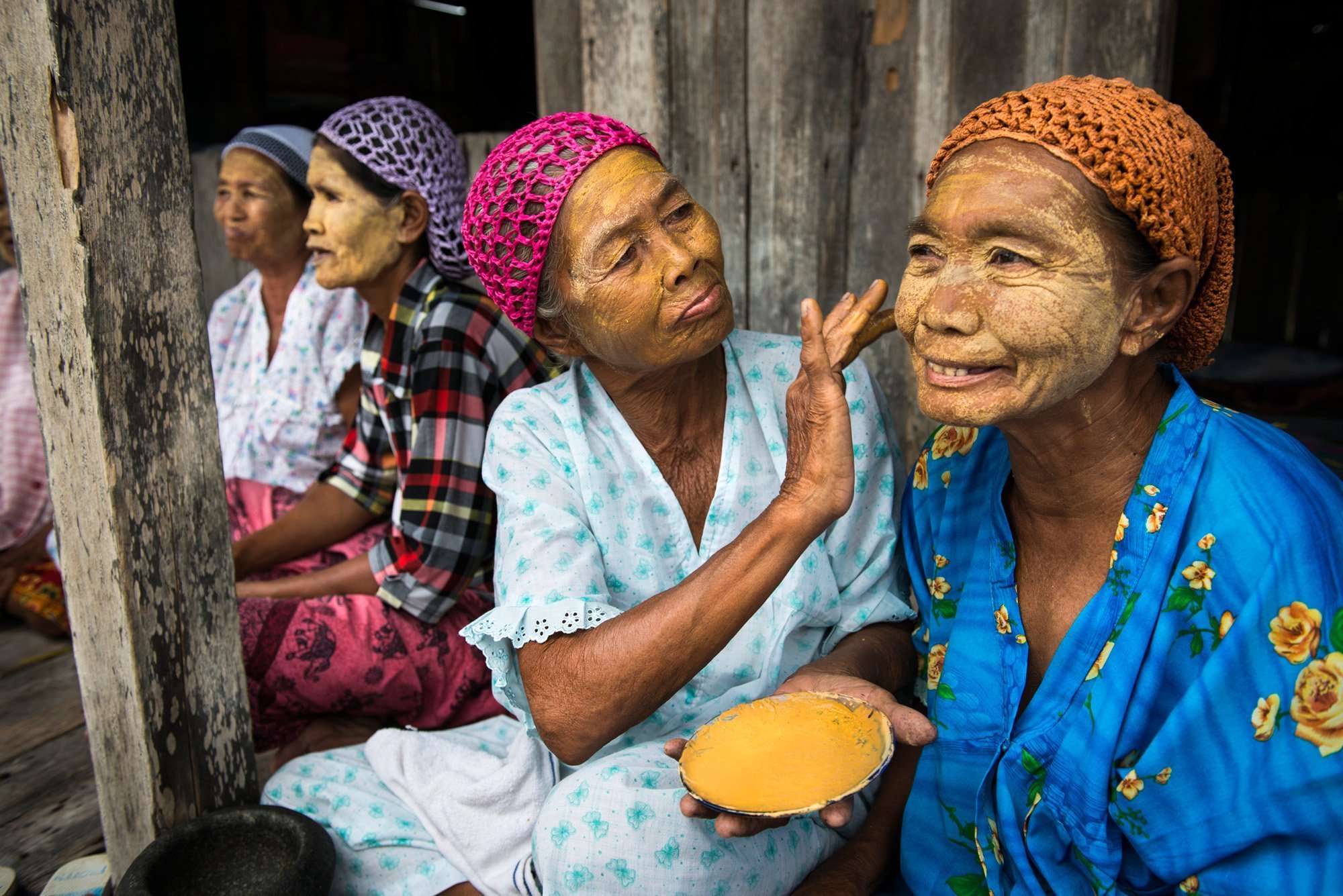
There are rare times on a trip when your excitement is heightened because there is something so new or different that you feel inspired. Seeing this group of old women with burak on their faces was one of these unique moments for me.
I had been seeing a number of women with burak on their faces soon after arriving into Tawi-Tawi. Burak is a natural sunblock made by the Sama-Bajau but it is also beneficial for the skin. Generally it’s the women that can be seen wearing it on a daily basis. I had been looking to take some portraits of women with the applied burak, and then it happened, I came across this spunky group of women. There are rare times on a trip when your excitement is heightened because there is something so new or different that you feel inspired. Seeing this group of old women with burak on their faces was one of these unique moments for me. I spent a good hour with the group laughing, interacting and taking some portraits. Then they decided to show us the process of making this sun blocking cream. An afternoon that I will certainly not forget.

Making of burak requires a few different processes. One of the first steps is to manually pound rice and tumeric together into a paste. Turmeric’s high antioxidant content makes it beneficial for the skin and also adds protection from the sun.

Burak is applied to the face as a wet paste. It eventually dries creating a white or yellowish coating. Generally, within Sama-Bajau communities, it is only women who apply this to their skin.
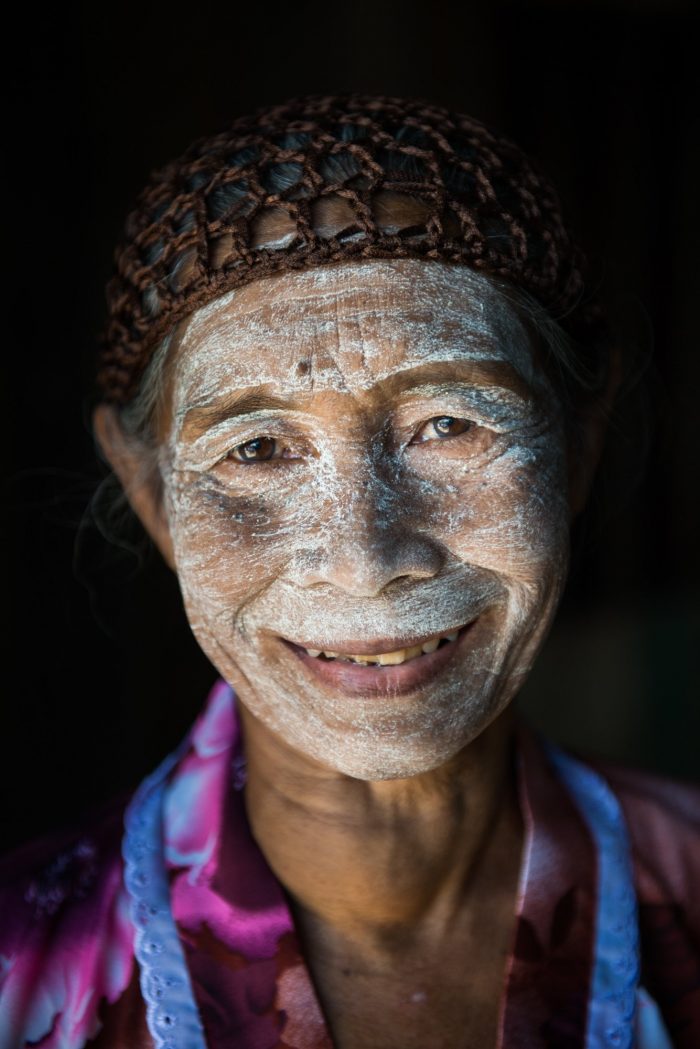
Something I do hope to explore more at some point is the natural environment of Tawi-Tawi. Because of our limited time we were not able to go diving or stop at any of the remote beaches or islands in the area. It is clear though just by visiting the markets and coastal communities that the ocean is in relatively good health compared to other regions of the country. This probably has a lot to do with there being less pressure on the resources. However, there are known issues facing the marine environment in this region such as dynamite fishing, over-fishing, coastal development, sedimentation, and coral bleaching. There are over 1800 species of fish, more than 400 species of algae, five species of sea turtles, 22 species of marine mammals and over 450 types of coral in the Sulu Sea, a global hotspot for marine biodiversity.
Being positioned inside the Coral Triangle, Tawi-Tawi is very rich in natural resources and is one of the global centers of marine biodiversity.
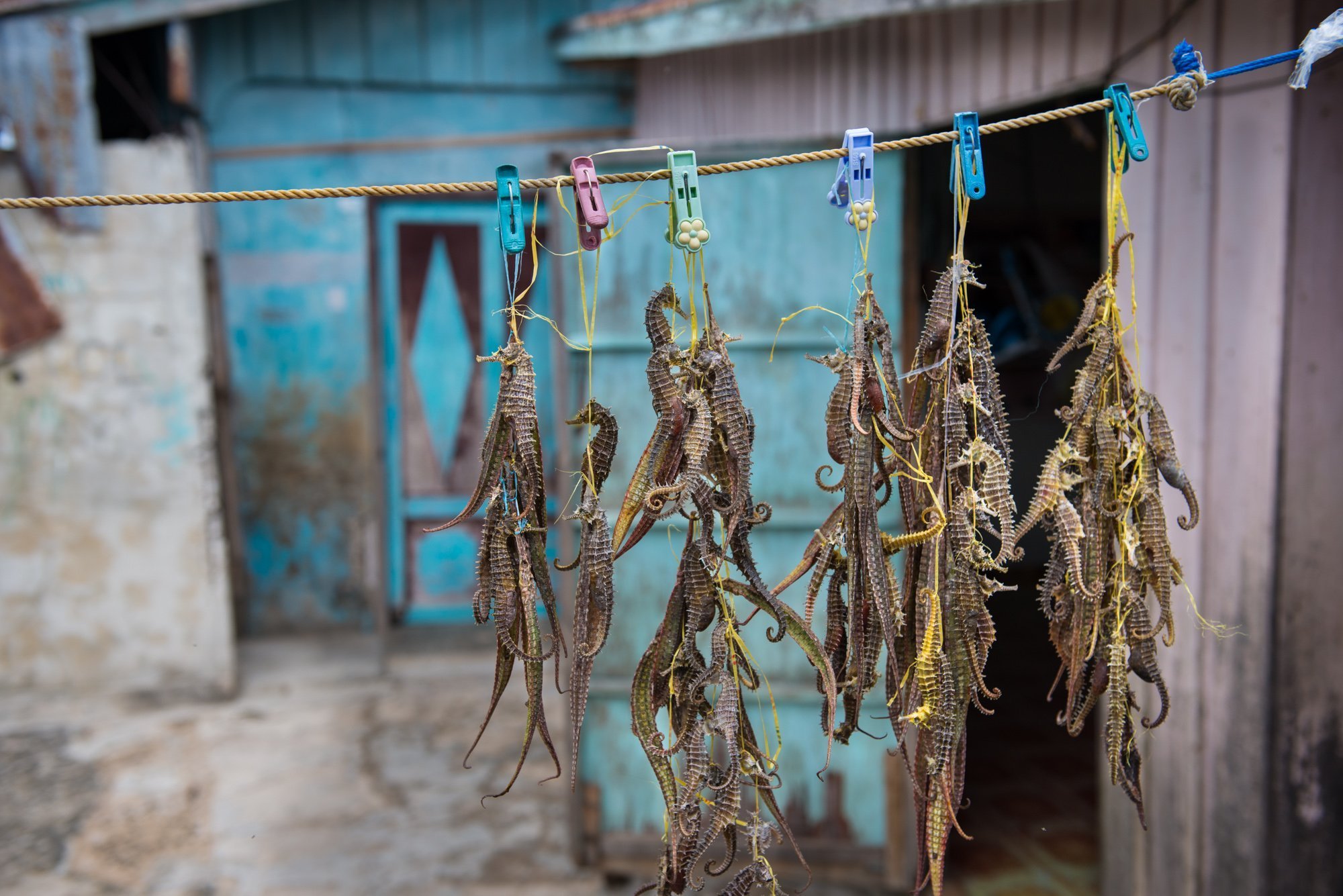
(above) Seahorses drying in a Sama-Bajau village. These are harvested and sold as medicine for various reasons including being used as an aphrodisiac.
(right) Sama-Bajau women selling their products in a weekly market. Everything from shells, seaweed, fish, and urchins can be found here. Being positioned inside the Coral Triangle, Tawi-Tawi is very rich in natural resources and is one of the global centers of marine biodiversity.
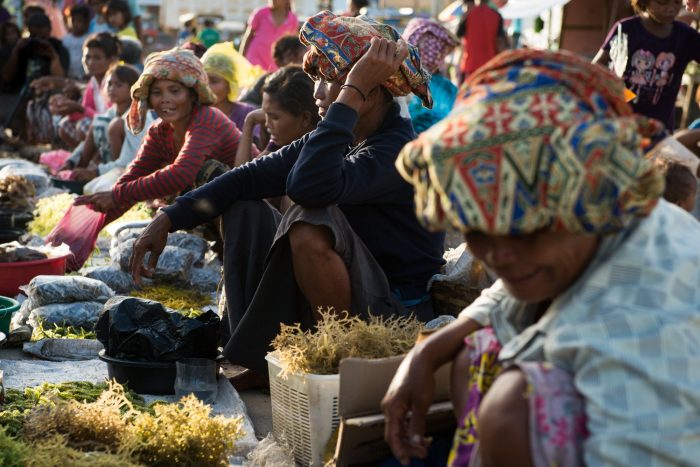
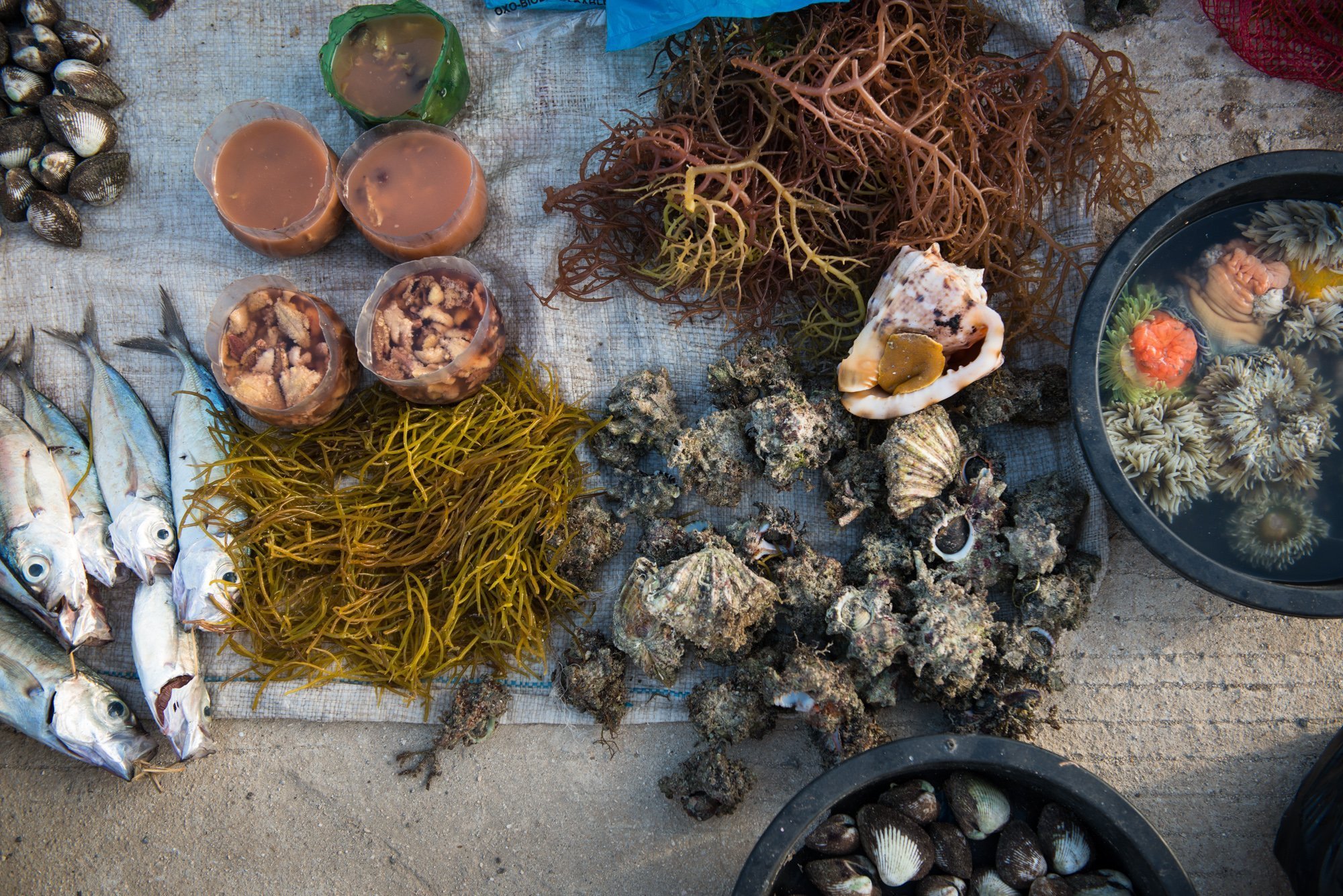
It took us four hours one way on a speedboat to reach the remote municipality of Tandubas. We came to visit the hometown of the most recognized and master mat weaver among the Sama, Haja Amina Appi. Tawi-Tawi is well known for its expert weaving, a place where unique colorful mats with complex geometric patterns are hand-made, and Tandubas is the center of where this craft orginated. Mat weaving among the Sama-Bajau is exclusive to women, from the harvesting of the pandan leaves to the execution of the design.
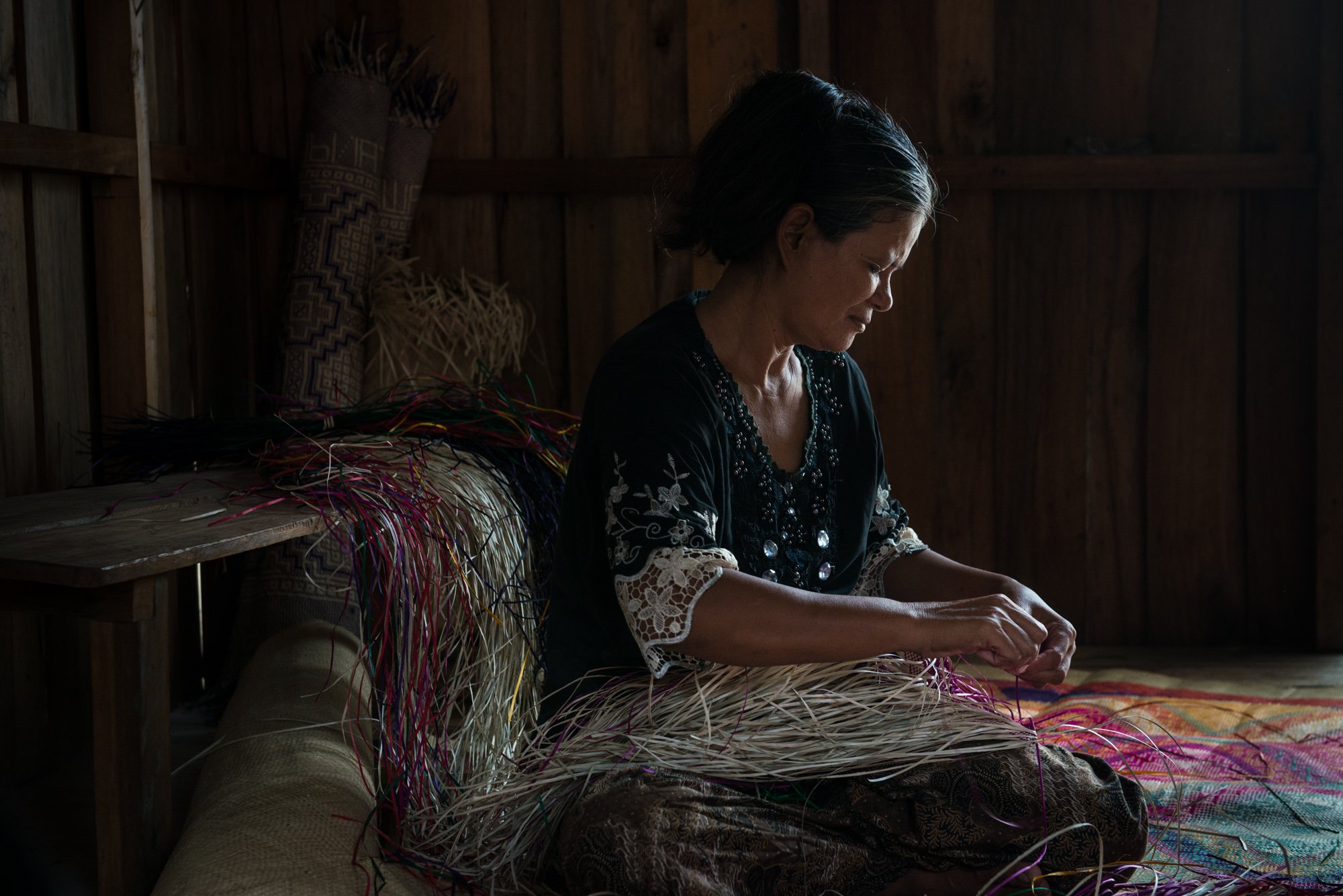
Tawi-Tawi is well known for its expert weaving, a place where unique colorful mats with complex geometric patterns are hand-made.
When I arrived, I met a lady weaving in her home and asked if I could photograph her. Weaving is a common craft shared by a number of different indigenous groups through the Philippines, so it can often be a challenge to find something visually different or interesting to shoot. If you don’t look closely or ask questions you could very easily walk away not noticing the regional differences. Over time, I have come to appreciate this craft even more. Before leaving Tawi-Tawi we were all given a traditional mat as a token of our visit. It really is beautiful, the vibrant colors and quality is exceptional.
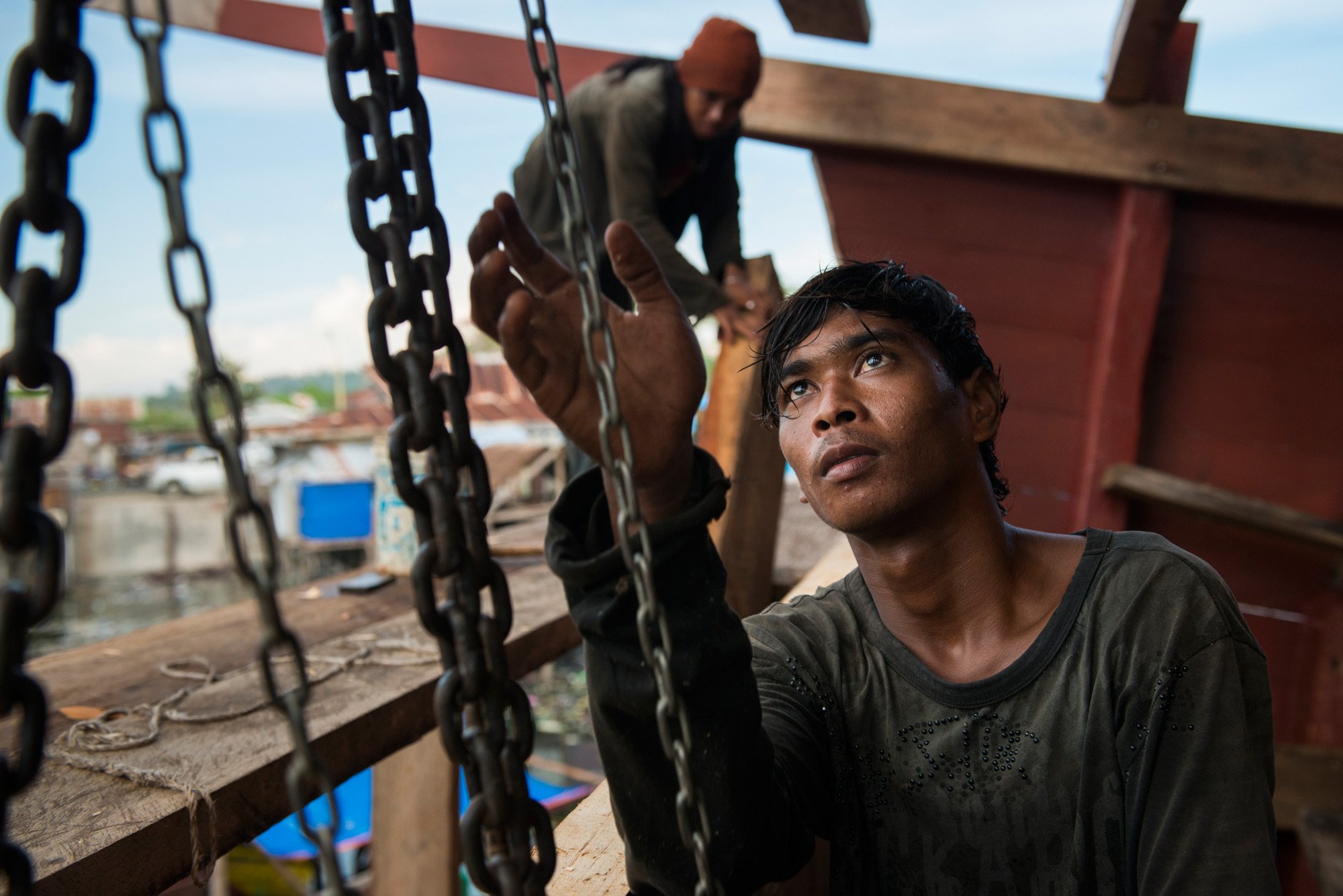
(above) A young man works on the construction of a large wooden prahus ship. Prahus refers to a type of boat originating in Malaysia and Indonesia that may be sailed with either end at the front. Today, modern wooden prahus type ships are common throughout this region and are mostly used to transport cargo and passengers.
(right) A shipbuilder prepares to latch a rope around a wooden beam to be hoisted inside the hull of the vessel.

Shipbuilding in Sulu has a rich history dating back to its precolonial inhabitants with the Sama people being celebrated as some of the most skilled craftsmen.
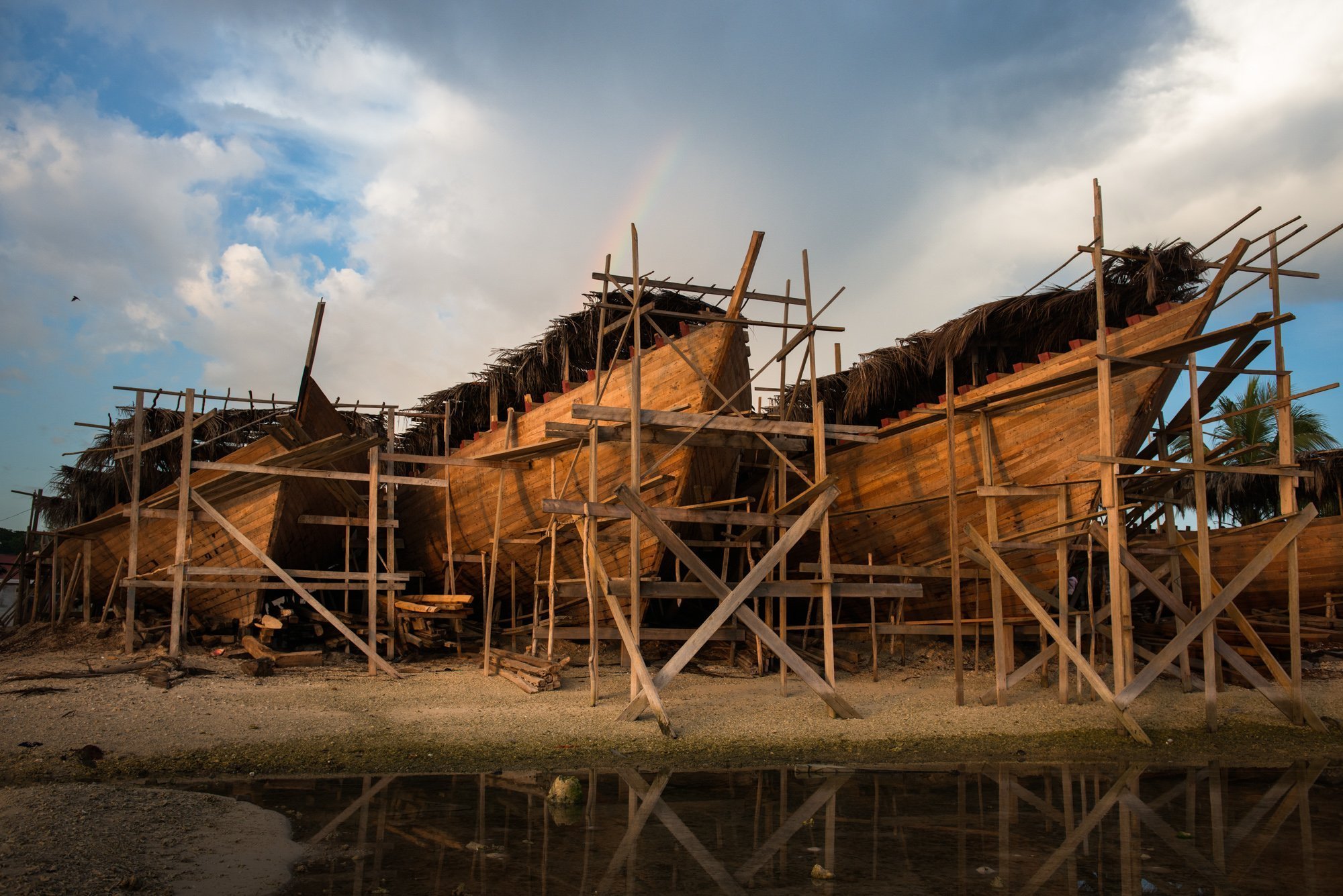
While passing from the airport to the center of Bongao, I noticed some rather large ships off on the right hand side of the road. The grandness of the ships immediately caught my interest as I have never seen anything like this being constructed in the Philippines before. Our group agreed to come back when time allowed to get a closer look at the ships. When we arrived back the following day I noticed everything was being handmade with what looked like very hard manual labor. I jumped right in and started taking images of the men. Often people doing hard manual labor make for interesting photographs because we can see raw emotion, dirt, sweat and people are generally comfortable in their element. While shooting I was able to talk with the men and found out that most of the workers were Sama-Bajau from one particular community.
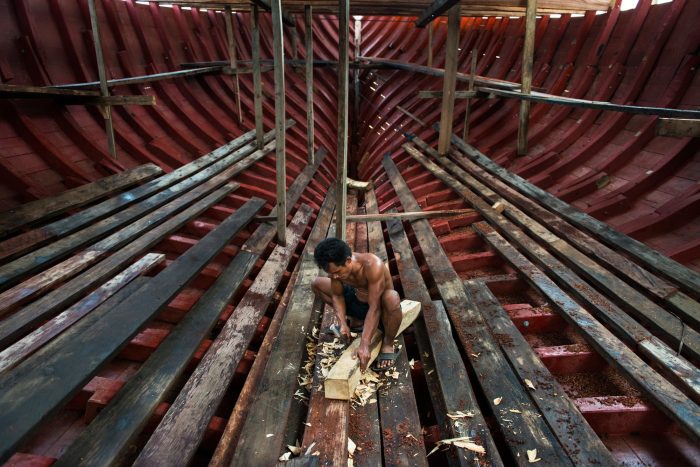

I learned that shipbuilding in Sulu has a rich history dating back to its precolonial inhabitants with the Sama people being celebrated as some of the most skilled craftsmen. All of these wooden Prahus ships were custom ordered from Malaysia and sell for anywhere between 15-20 million pesos. The men told us it takes roughly one year to build one, all by hand. This is something truly unique to Tawi-Tawi and the craftsmanship is remarkable.

(above) A Sama-Bajau craftsman. The Sama-Bajau have been building different styles of wooden boats for centuries.
(below) Overlooking Bongao, Tawi-Tawi’s capital city.
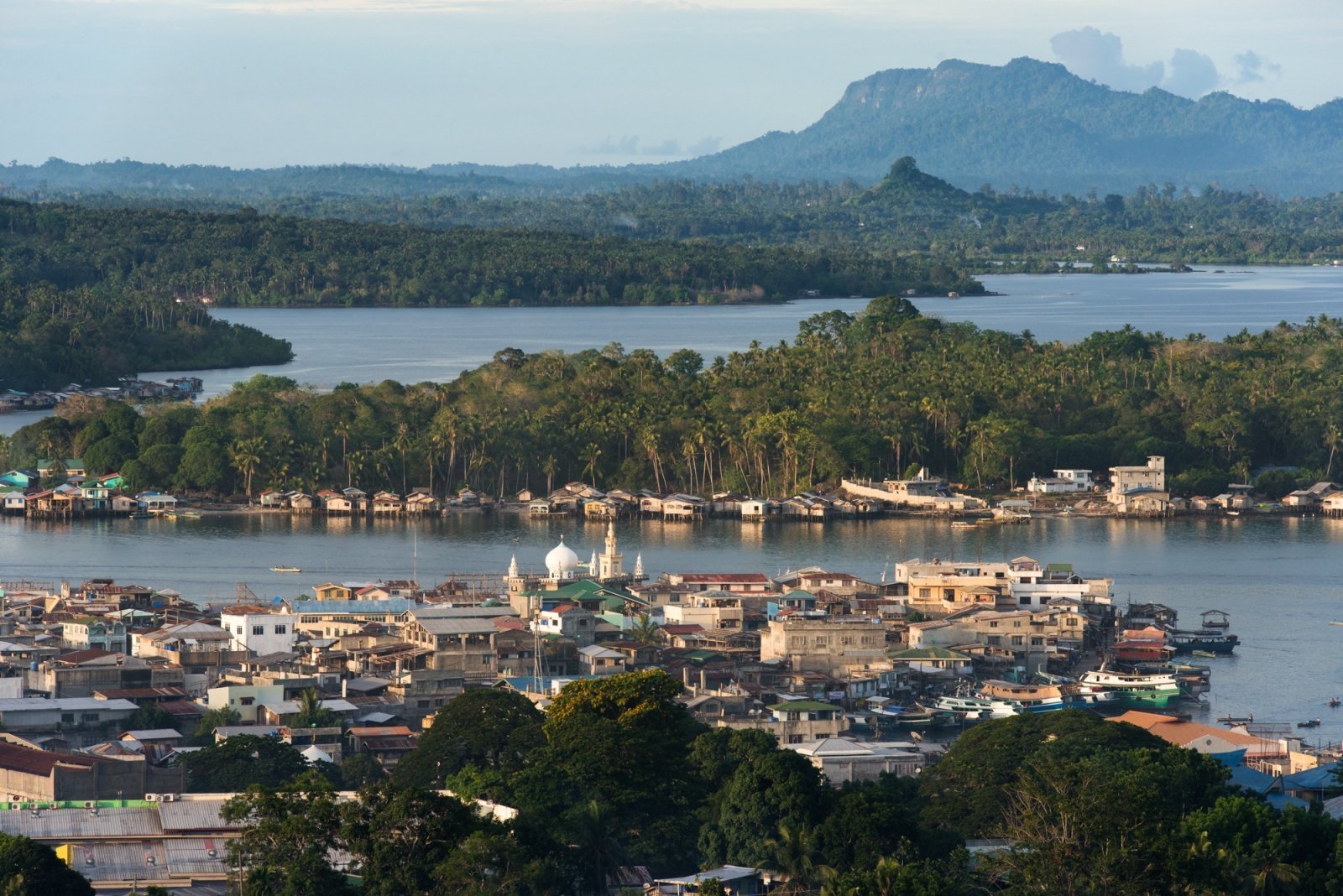
The name of Tawi-Tawi is a projection of the Malay word “jauh” meaning “far.” Precolonial travelers from Asian mainland would repeat the word as “jaui-jaui” to mean “far away” because of the distance to the islands. The word “Tawi-Tawi” was picked up later and become the official name of the province. (Wiki)
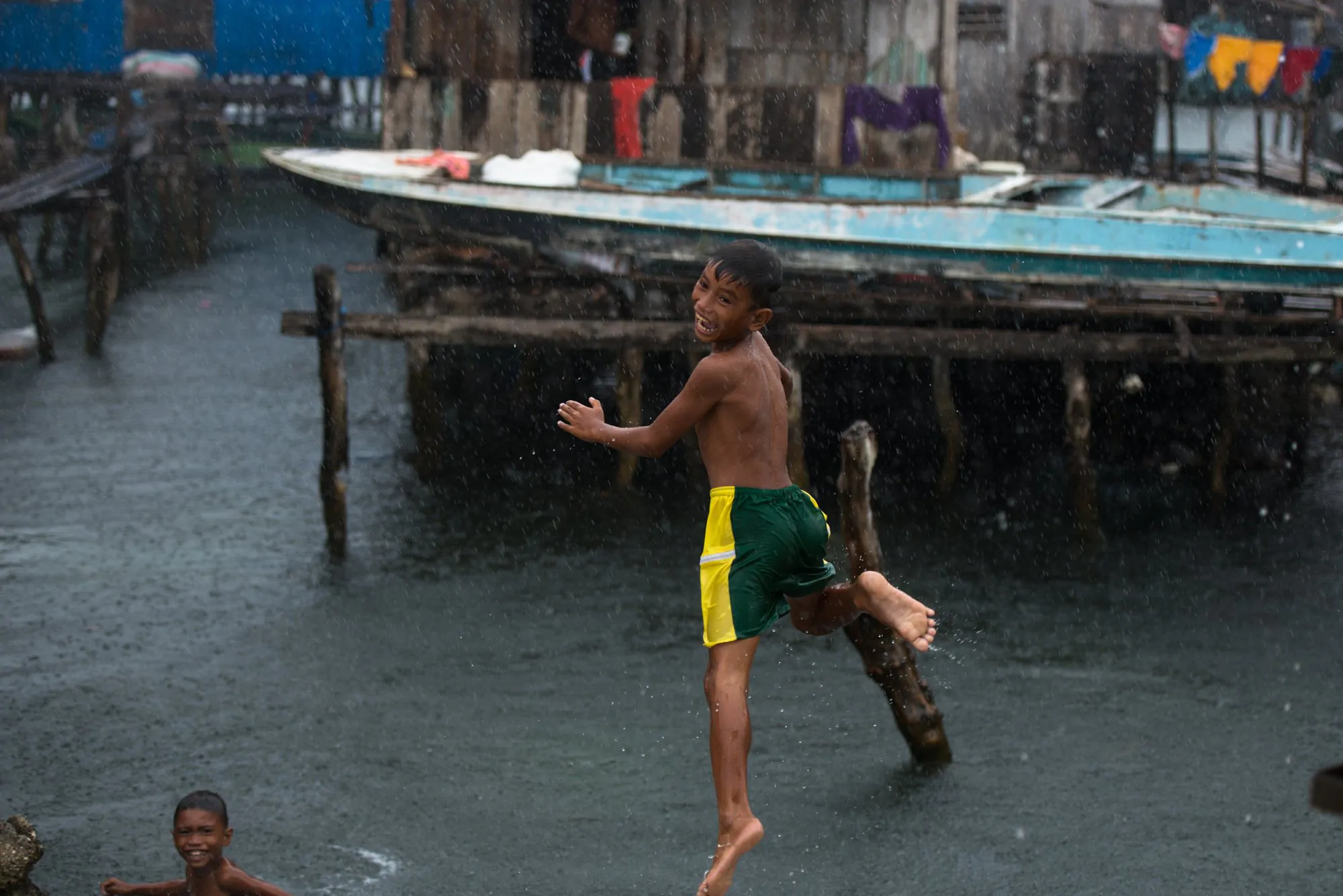
My visit was short, but filled with lasting impressions, new friendships and sparked even more curiosity to explore and find stories of other places and people around Sulu. Like most new places I visit, no matter the length of time, it always feels like I didn’t stay long enough. Perhaps this is because of the overwhelming desire to really get to know a place well. I do hope this is just the first of many trips to Tawi-Tawi and that I will be able to get to know this region of the country much better. There is still so much to learn.
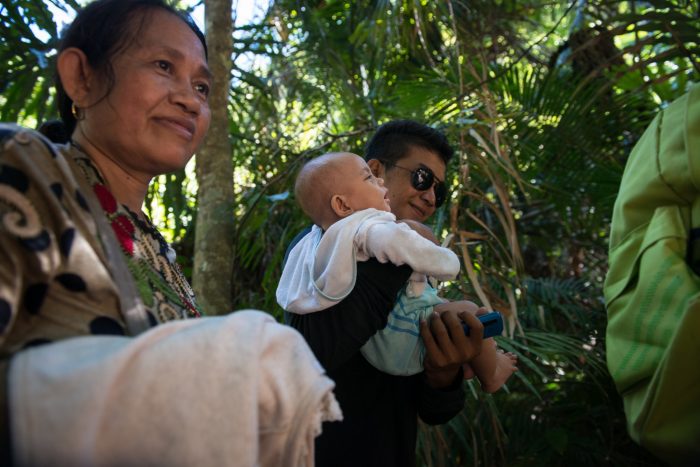
A family with their infant baby climb the hour long hike leading to the top of Bud Bongo, a sacred mountain for Tawi-Tawians. People believe that the mountain can heal diseases and cleanse them of their sins. It is common for locals to carry their babies up the mountain to be blessed for good health while praying in a number of shrines along the way.

A Philippine Macaque eats a banana given to it by a passerby on the path up to Bud Bongo. Aside from being a sacred mountain, the 250 hectare Bud Bongao is a protected forest area. These macaques are often considered the guardians of the mountain.
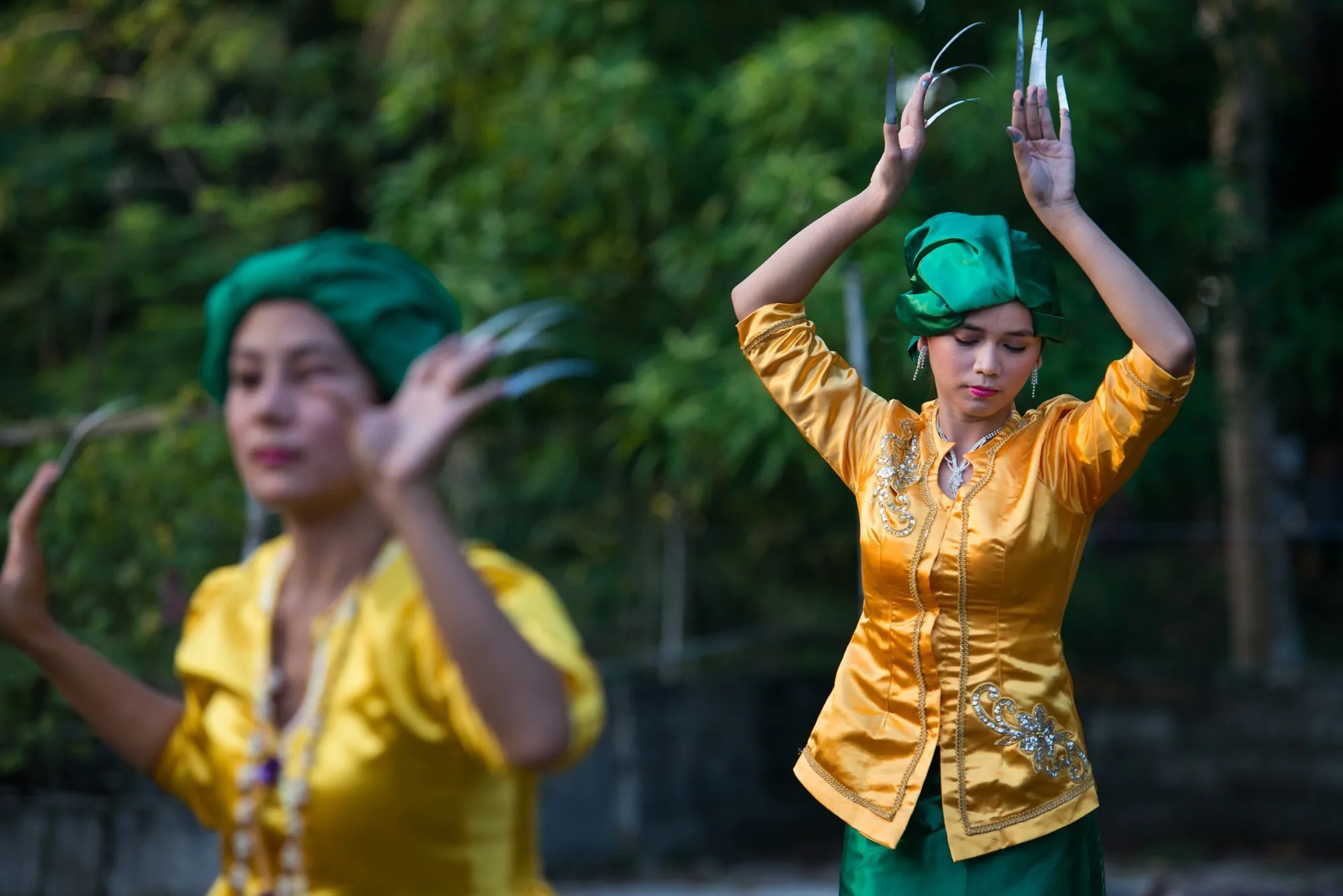
(above) A Pangalay dance inspired by Tawi-Tawian women carrying water. It requires grace and flexibility in the elbows, shoulders and wrists. Pangalay is the traditional fingernail dance of the Tausug people of the Sulu Archipelago.
(right) Looking down from Bud Bongo Mountain.

Men begin to gather at their local mosque for Friday prayer. Islam is the oldest recorded monotheistic religion in the Philippines. The religion reached the Philippines in the 14th century with the arrival of Muslim traders from the Persian Gulf, Southern India, and their followers from several sultanate governments in the Malay Archipelago. (Wiki)
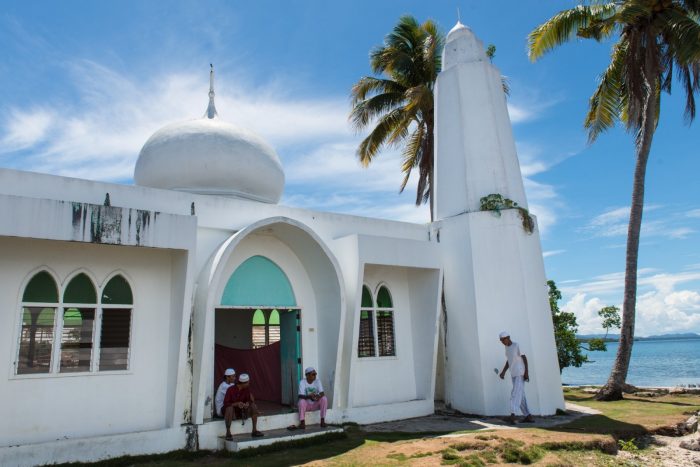
My visit was short, but filled with lasting impressions, new friendships and sparked even more curiosity to explore and find stories of other places and people around Sulu.
The video reel put together by Gabriel Malvar & Ginggay Hontiveros and their team at the Extra Mile Productions. I am very grateful for their support and applaud their other advocacies. Have a look at their newest project here, called Monsoon. Also, stayed tuned for more video segments in the near future from this trip.
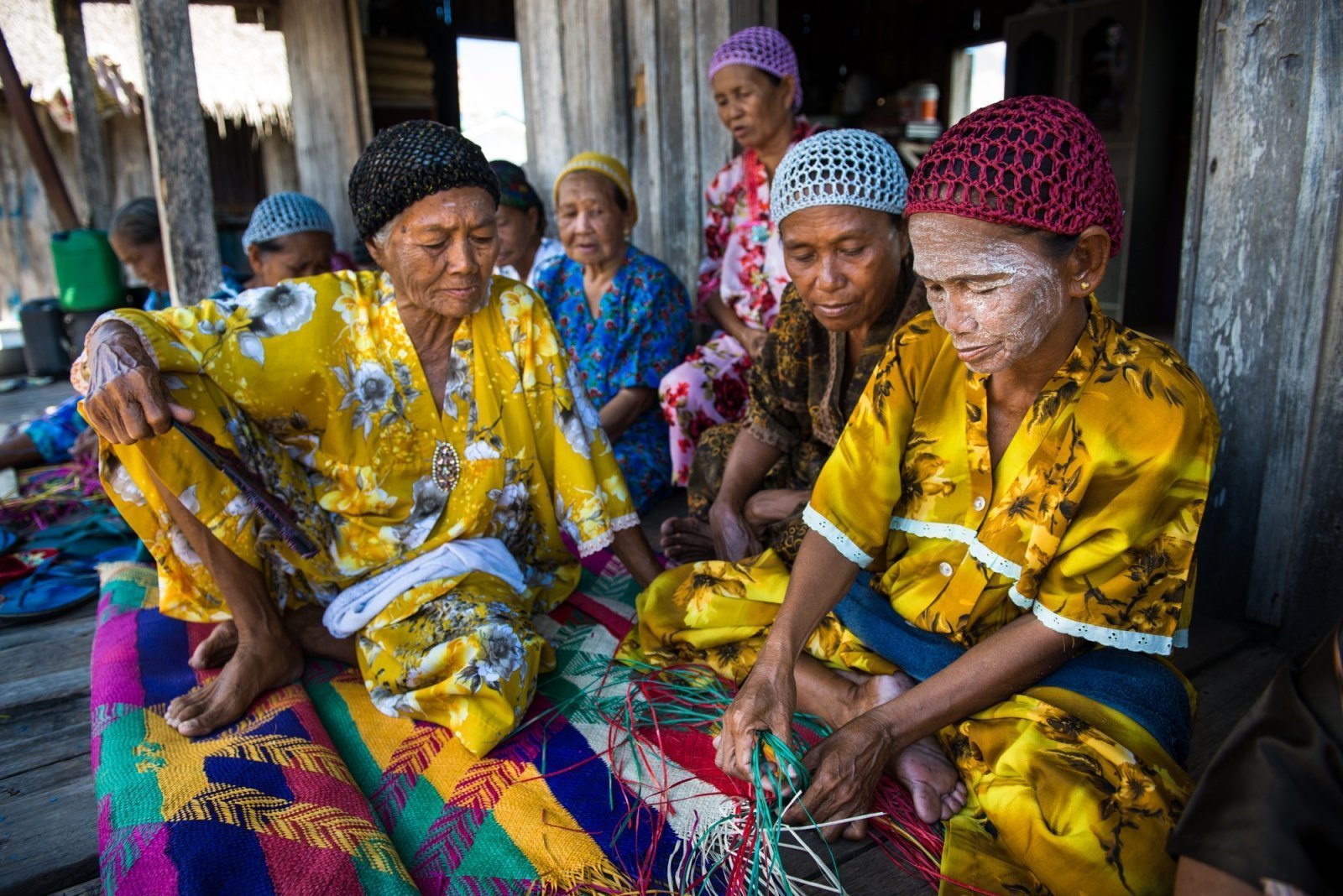
email: [email protected] |
© 2024 Jacob Maentz